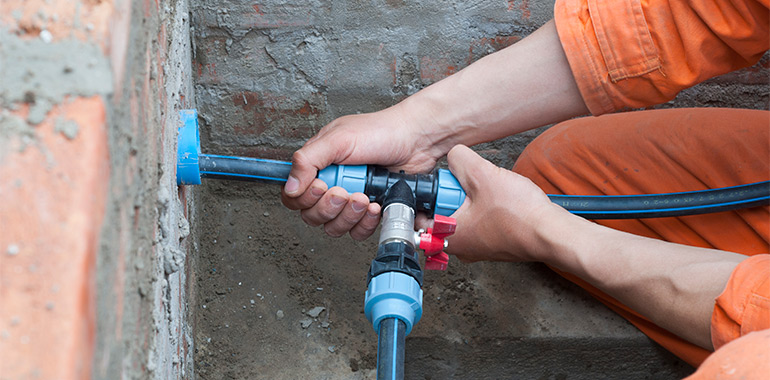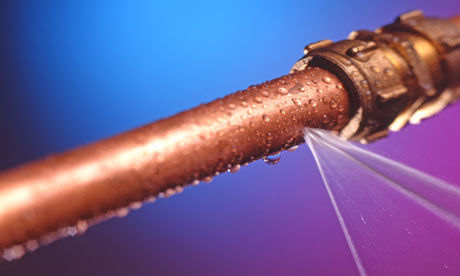How do you really feel with regards to Why Your Water Pipes Are Noisy and How To Shut Them Up?

To diagnose noisy plumbing, it is essential to establish first whether the undesirable sounds happen on the system's inlet side-in other words, when water is transformed on-or on the drainpipe side. Sounds on the inlet side have varied causes: excessive water pressure, worn shutoff and tap components, poorly connected pumps or various other devices, improperly put pipe fasteners, and plumbing runs including too many limited bends or various other restrictions. Sounds on the drainpipe side normally come from bad location or, as with some inlet side sound, a design containing limited bends.
Hissing
Hissing noise that happens when a faucet is opened somewhat typically signals excessive water pressure. Consult your regional public utility if you presume this issue; it will have the ability to tell you the water stress in your location and also can install a pressurereducing shutoff on the incoming supply of water pipeline if essential.
Various Other Inlet Side Noises
Squeaking, squealing, damaging, snapping, and tapping normally are triggered by the growth or contraction of pipes, normally copper ones supplying hot water. The sounds take place as the pipelines slide versus loose fasteners or strike nearby residence framework. You can commonly identify the place of the issue if the pipelines are exposed; just follow the sound when the pipelines are making sounds. More than likely you will find a loosened pipe hanger or a location where pipes lie so close to floor joists or various other framing pieces that they clatter versus them. Affixing foam pipeline insulation around the pipelines at the point of call should remedy the trouble. Make sure bands and wall mounts are safe and give appropriate assistance. Where possible, pipe bolts need to be affixed to substantial structural components such as foundation walls as opposed to to mounting; doing so reduces the transmission of resonances from plumbing to surface areas that can amplify as well as transfer them. If attaching fasteners to framework is inescapable, wrap pipelines with insulation or various other durable product where they get in touch with bolts, and sandwich the ends of new fasteners between rubber washers when mounting them.
Dealing with plumbing runs that suffer from flow-restricting limited or numerous bends is a last hope that must be embarked on only after getting in touch with an experienced plumbing professional. Regrettably, this scenario is relatively common in older homes that might not have been developed with interior plumbing or that have seen several remodels, specifically by beginners.
Chattering or Shrilling
Extreme chattering or screeching that happens when a shutoff or tap is turned on, and that typically goes away when the fitting is opened fully, signals loose or faulty inner components. The remedy is to replace the valve or faucet with a new one.
Pumps and home appliances such as washing makers and also dishwashers can transfer electric motor sound to pipelines if they are poorly attached. Connect such things to plumbing with plastic or rubber hoses-never stiff pipe-to isolate them.
Drainpipe Noise
On the drain side of plumbing, the principal objectives are to get rid of surfaces that can be struck by dropping or hurrying water as well as to insulate pipelines to consist of inevitable sounds.
In brand-new building and construction, tubs, shower stalls, toilets, and also wallmounted sinks and containers must be set on or against durable underlayments to reduce the transmission of sound via them. Water-saving toilets and taps are less loud than traditional designs; mount them instead of older kinds even if codes in your area still permit using older fixtures.
Drains that do not run vertically to the cellar or that branch into horizontal pipe runs sustained at floor joists or other mounting present specifically problematic sound problems. Such pipes are big sufficient to emit substantial vibration; they likewise bring substantial quantities of water, that makes the situation worse. In new building, specify cast-iron dirt pipelines (the huge pipelines that drain pipes commodes) if you can afford them. Their massiveness includes much of the sound made by water going through them. Likewise, avoid transmitting drains in walls shown bedrooms and also areas where people gather. Wall surfaces consisting of drainpipes need to be soundproofed as was explained earlier, utilizing double panels of sound-insulating fiber board and wallboard. Pipes themselves can be wrapped with special fiberglass insulation created the function; such pipelines have an invulnerable vinyl skin (in some cases including lead). Outcomes are not always acceptable.
Thudding
Thudding sound, often accompanied by shivering pipes, when a faucet or device shutoff is turned off is a condition called water hammer. The noise as well as resonance are brought on by the resounding wave of stress in the water, which suddenly has no location to go. Often opening up a shutoff that discharges water quickly into an area of piping having a restriction, elbow joint, or tee fitting can produce the same condition.
Water hammer can typically be treated by setting up fittings called air chambers or shock absorbers in the plumbing to which the problem valves or faucets are linked. These devices permit the shock wave produced by the halted circulation of water to dissipate in the air they contain, which (unlike water) is compressible.
Older plumbing systems might have short upright areas of capped pipe behind wall surfaces on faucet competes the very same function; these can at some point full of water, minimizing or ruining their effectiveness. The treatment is to drain the water supply entirely by turning off the major water system valve and also opening up all faucets. After that open up the major supply shutoff as well as close the taps one at a time, beginning with the tap nearest the shutoff as well as finishing with the one farthest away.
WHY IS MY PLUMBING MAKING SO MUCH NOISE?
This noise indeed sounds like someone is banging a hammer against your pipes! It happens when a faucet is opened, allowed to run for a bit, then quickly shut — causing the rushing water to slam against the shut-off valve.
To remedy this, you’ll need to check and refill your air chamber. Air chambers are filled with — you guessed it — air and help absorb the shock of moving water (that comes to a sudden stop). Over time, these chambers can fill with water, making them less effective.
You’ll want to turn off your home’s water supply, then open ALL faucets (from the bathroom sink to outdoor hose bib) to drain your pipes. Then, turn the water back on and hopefully the noise stops! If you’re still hearing the sound, give us a call to examine further.
Whistles
Whistling sounds can be frustrating, as sometimes the source isn’t easily identified. However, if you can pinpoint which faucet or valve that may be the cause, you’ll likely encounter a worn gasket or washer — an easy fix if you replace the worn parts!Whistling sounds from elsewhere can mean a number of things — from high water pressure to mineral deposits. Your best plan of attack here is to give our plumbing experts a call. We’ll be able to determine where the noise is coming from and what the cause may be, then recommend an effective fix!
Cracks or Ticks
Cracking or ticking typically comes from hot water going through cold, copper pipes. This causes the copper to expand resulting in a cracking or ticking sound. Once the pipes stop expanding, the noise should stop as well.
Pro tip: you may want to lower the temperature of your water heater to see if that helps lessen the sound, or wrapping the pipe in insulation can also help muffle the noise.
Bangs
Bangs typically come from water pressure that’s too high. To test for high water pressure, get a pressure gauge and attach it to your faucet. Water pressure should be no higher than 80 psi (pounds per square inch) and also no lower than 40 psi. If you find a number greater than 80 psi, then you’ve found your problem!
Next step is to give us a call in order to install a pressure regulator. Trust us, you don’t want to wait to resolve this issue. Not only is the sound annoying, but high water pressure can be destructive to your home — including damaging certain appliances, like your washer and dishwasher.
Dripping
You might be accustom to the slow quiet drip your kitchen faucet makes. You might have even tuned out your bathroom sink dripping and drabbing all day long — but it’s time to find its cause.
A slow drip could signify a variety of easy to fix issues, such as a worn out O ring, or loose part. And by ignoring the drip, you could be wasting up to 2,000 gallons of water a year! So start conserving water — get it looked at ASAP.
https://www.pwessig.com/blog/2018/december/why-is-my-plumbing-making-so-much-noise-/

Do you like reading about Why is My Home Making Strange Plumbing Noises? Give a review down below. We'd be glad to see your insights about this entry. We are looking forward that you visit us again soon. If you please take the time to promote this blog posting if you enjoyed it. Bless you for your time. Please pay a visit to our site back soon.
Visit
Comments on “Ways To Eliminate Irritating Plumbing Noises”